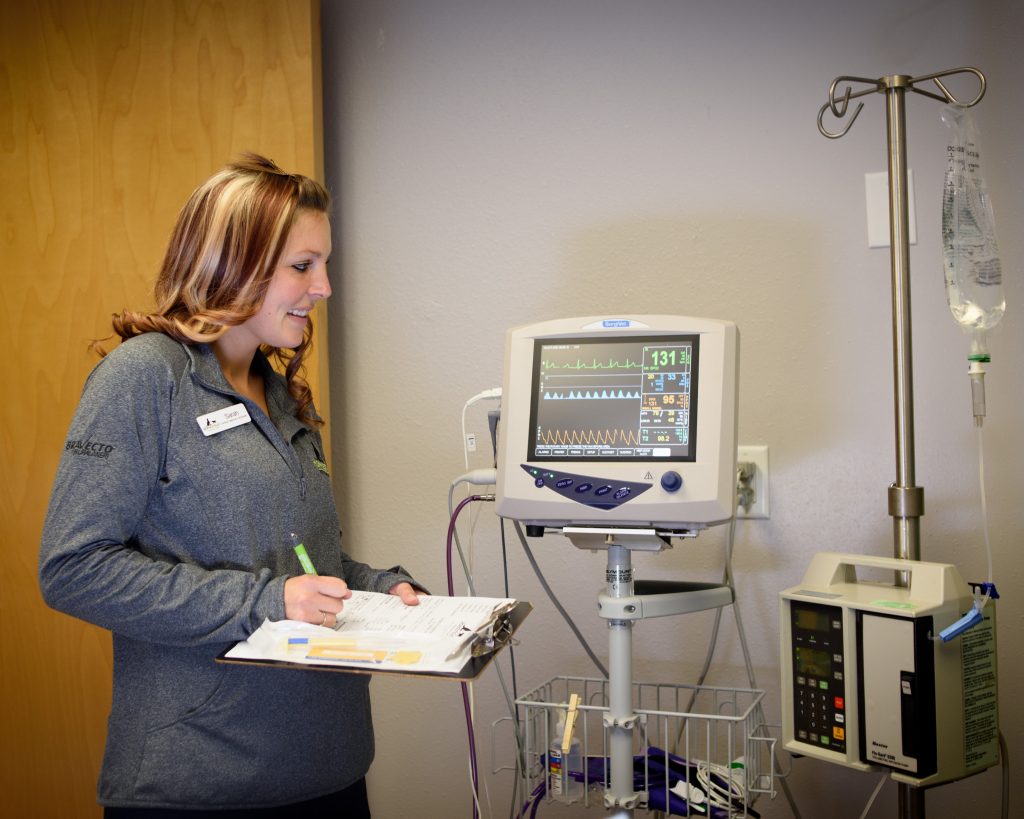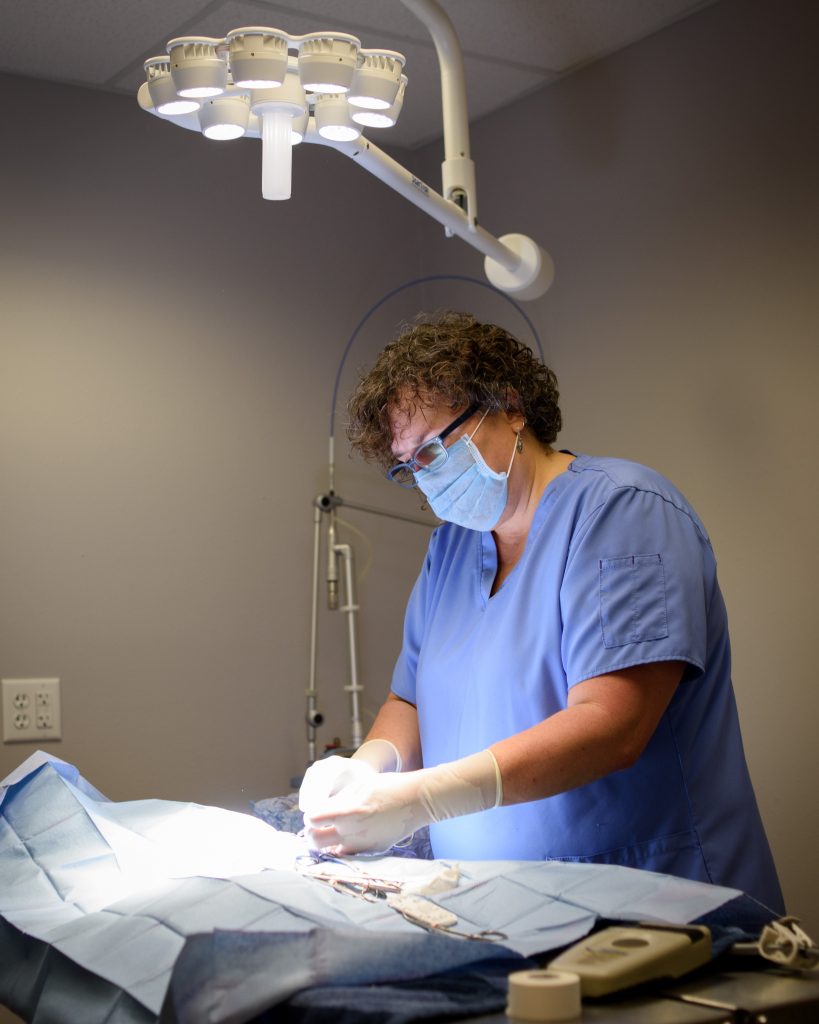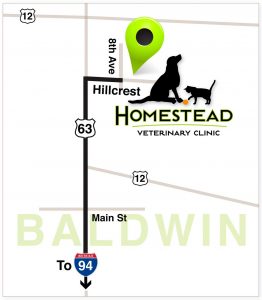Frequently Asked Questions About Surgery for Your Pet
What Risks are involved with Anesthesia?
We make every effort to keep your animal safe during anesthesia. We have a technician present during surgery to monitor vital signs as well as equipment that monitors heart rate and blood oxygenation. We use gas anesthesia which is considered very safe. We also evaluate the health status, age, and body size of the pet as we individualize our anesthesia plan.
We recommend pre-anesthesia blood testing to look for health problems that may not be detected on physical examination. For older animals undergoing surgery or dental procedures we often suggest full life stage blood work that is also useful as a baseline if future illnesses arise.
We also recommend IV catheterization and intra-operative fluids to help maintain blood pressure and provide ready access for drug administration. These options can be further discussed with the doctor or technician when you pet is being checked in for surgery.
Although there are inherent risks involved in anesthesia and surgery, keep in mind that we do everything we can to minimize the risks, and in most cases the risks of not doing a medically necessary procedure outweigh the risks of the procedure itself.
Can my pet eat or drink before surgery?
It is important that surgery be done on an empty stomach to avoid vomiting and possible aspiration of food into the lungs. We recommend withholding food after 10:00 pm the night before your appointment. Water is okay.
How is pain control handled?
It was once believed that we didn’t want to give our pets anything for pain because they might feel too good and overdo it. Now the science has shown that pain control actually helps the healing process. Young healthy animals undergoing routine surgeries often only need an injection of pain medication in addition to the pre-anesthetic medications. Some situations require additional take-home medications. Please let us know if you think your pet’s pain is not being well controlled.
Can you perform other services while my pet is under anesthesia?
While your pet is under anesthesia for a scheduled procedure, sometimes it is a good opportunity to take care of things like ear cleaning, nail trimming, microchipping, or checking the teeth. We will ask you on the intake form if you would like us to perform any of these services while your pet us under anesthesia. We trim the toenails under anesthesia at no additional cost.
Spay / Neuter Questions? See out Spay/Neuter information page.
If you have additional questions about your pet’s surgery, please don’t hesitate to contact us.




